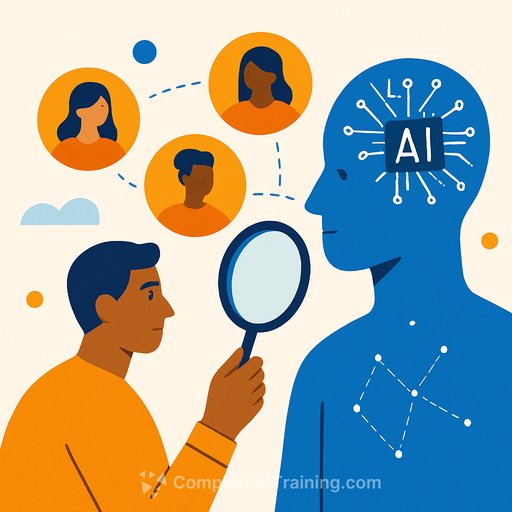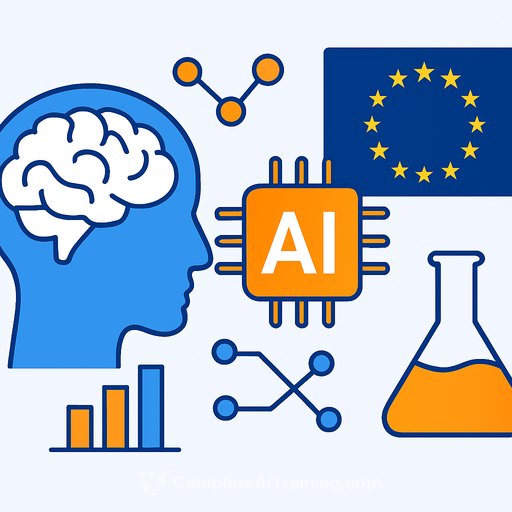AI Models Simulate Human Subjects to Support Social Science Research, But Limitations Persist
Advances in large language models (LLMs) have opened new paths for social science research by enabling simulations of human subjects. These AI-driven simulations help researchers test assumptions, run pilot studies, and estimate sample sizes more cost-effectively. However, despite promising early results, human data remains indispensable for reliable insights.
Applications and Challenges of LLM Social Simulations
Social science research spans economics, psychology, sociology, and political science, relying on diverse methods such as randomized controlled trials (RCTs), surveys, and fieldwork. The core challenge is the complexity of studying humans, whose behaviors are variable and context-dependent.
LLMs can emulate human speech and roleplay diverse subjects or even social scientists. This capability allows researchers to run experiments that are either human-possible (HP)—where human subjects could be used—or human-impossible (HI), such as large-scale policy experiments. Yet, LLMs often produce less varied or biased responses and struggle to generalize to new settings.
Assessing AI as a Human Proxy
Testing the accuracy of LLMs as stand-ins for human behavior is crucial. One study used GPT-4 to simulate responses to 476 randomized treatments previously tested on humans. The model's predictions correlated strongly (0.85) with actual treatment effects and matched expert human predictions, even for experiments conducted after GPT-4's training cutoff.
This suggests LLMs can anticipate human reactions to novel interventions. However, newer models are harder to evaluate because they access up-to-date information via web searches, complicating validation. Creating archives of unpublished studies may help assess future AI models reliably.
Distributional Alignment and Response Variation
LLMs tend to produce narrower, less diverse responses than humans. For example, in simple tasks like picking a number, AI outputs cluster predictably, missing the natural variability found in human answers. This distributional misalignment can distort research findings.
Researchers have experimented with techniques to improve this, such as:
- Simulating multiple respondents to capture a range of answers.
- Prompting the model to verbalize likely distributions.
- Using "few-shot" steering by priming the model with real-world distribution data from related questions.
These approaches yield more human-like variation, especially for opinion-based questions, though challenges remain for modeling preferences accurately.
Additional Challenges: Bias, Sycophancy, and Alienness
LLMs introduce other issues that can affect social science research:
- Bias: Models often reinforce social stereotypes related to race, ethnicity, and gender.
- Sycophancy: LLMs designed as assistants may provide agreeable but inaccurate answers to please users.
- Alienness: Some AI responses superficially resemble human answers but contain logical errors or unusual reasoning, such as incorrect math solved by convoluted methods.
- Generalization: LLMs struggle to apply knowledge beyond their training data, limiting their use for new populations or large group behaviors.
While bias and sycophancy can be partly addressed with fine-tuning, expert roleplay prompts, or interview-based simulations, alienness and generalization require deeper theoretical understanding of how these models function.
Hybrid Approaches: Combining Human and AI Data
Given current limitations, a hybrid research design combining human subjects and LLM simulations offers a practical path forward. This approach uses a small human pilot study alongside LLM-generated data to assess interchangeability and avoid bias.
Through prediction-powered inference, researchers can leverage the low cost of AI-generated data to enhance statistical power without compromising the validity of human-subject findings. Early pilot studies also inform optimal sample size allocation between humans and AI for cost-effective research.
For example, when designing interventions to shift attitudes on climate change or vaccine trust, running simulations with LLMs first can improve study design and survey wording. However, human data remains essential to ground conclusions in real-world behavior.
Conclusion
LLMs bring valuable tools to social science research by enabling scalable simulations and preliminary testing. But their current inability to fully replicate human variability, along with biases and generalization challenges, means they cannot replace human subjects. Instead, combining AI simulations with human data offers a promising strategy to improve research efficiency while maintaining credibility.
For those interested in expanding their AI skills for research or practical applications, exploring resources like Complete AI Training can provide structured guidance on working with AI tools effectively.
References
Anthis, J. R., et al. "LLM Social Simulations Are a Promising Research Method," arXiv (2025). DOI: 10.48550/arxiv.2504.02234
Your membership also unlocks:






